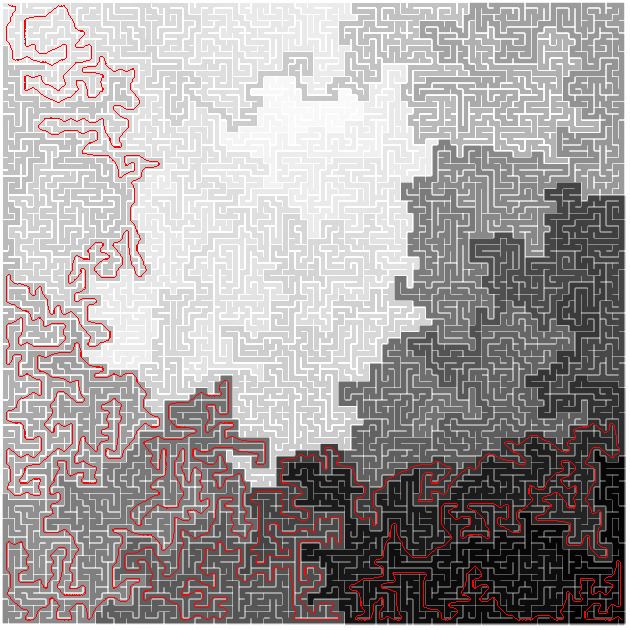 | ||
The fast marching method is a numerical method created by James Sethian for solving boundary value problems of the Eikonal equation:
Typically, such a problem describes the evolution of a closed surface as a function of time
The algorithm is similar to Dijkstra's algorithm and uses the fact that information only flows outward from the seeding area. This problem is a special case of level set methods. More general algorithms exist but are normally slower.
Extensions to non-flat (triangulated) domains solving:
was introduced by Ron Kimmel and James Sethian.
Algorithm
First, assume that the domain has been discretized into a mesh. We will refer to meshpoints as nodes. Each node
The algorithm works just like Dijkstra's algorithm but differs in how the nodes' values are calculated. In Dijkstra's algorithm, a node's value is calculated using a single one of the neighboring nodes. However, in solving the PDE in
Nodes are labeled as far (not yet visited), considered (visited and value tentatively assigned), and accepted (visited and value permanently assigned).
- Assign every node
x i U i = + ∞ and label them as far; for all nodesx i ∈ ∂ Ω setU i = 0 and labelx i - For every far node
x i U ~ U ~ < U i U i = U ~ x i - Let
x ~ U . Labelx ~ - For every neighbor
x i x ~ U ~ - If
U ~ < U i U i = U ~ x i - If there exists a considered node, return to step 3. Otherwise, terminate.
